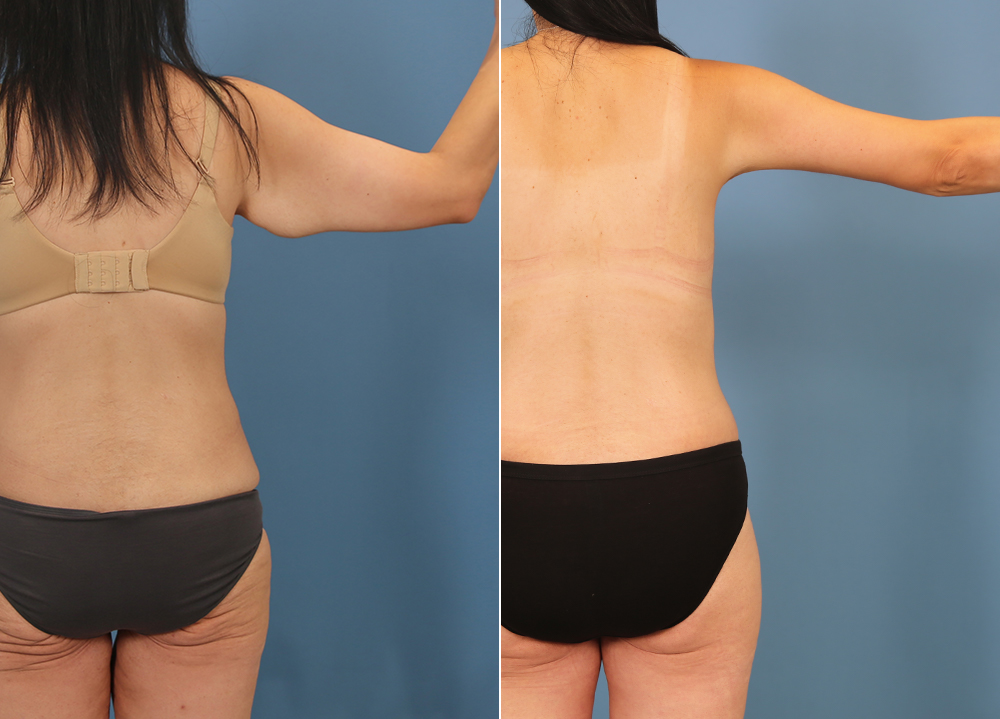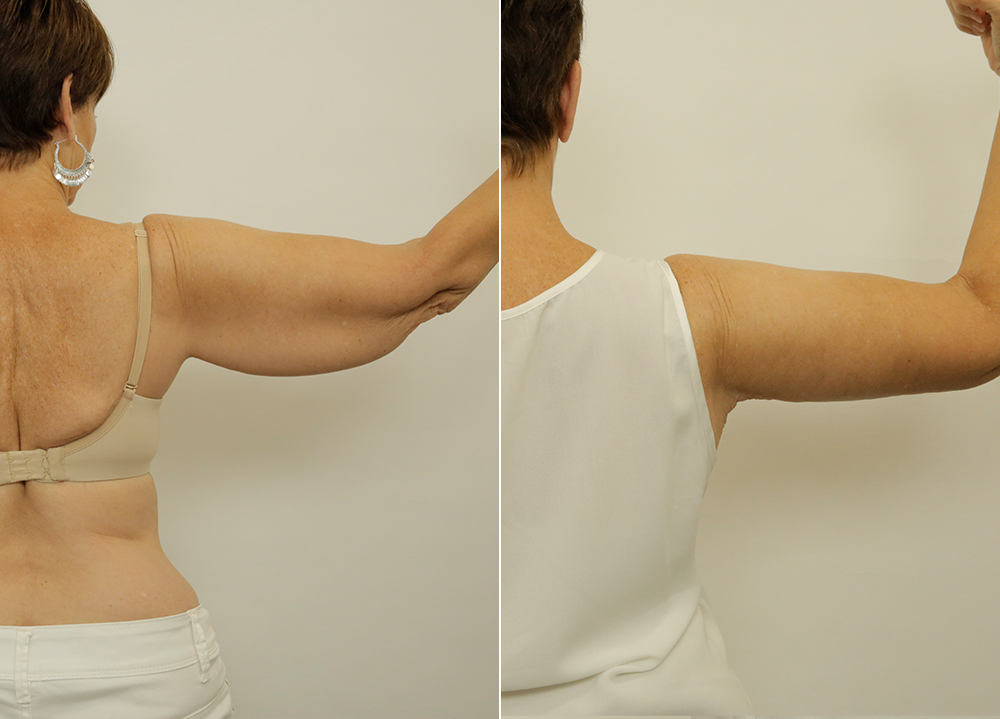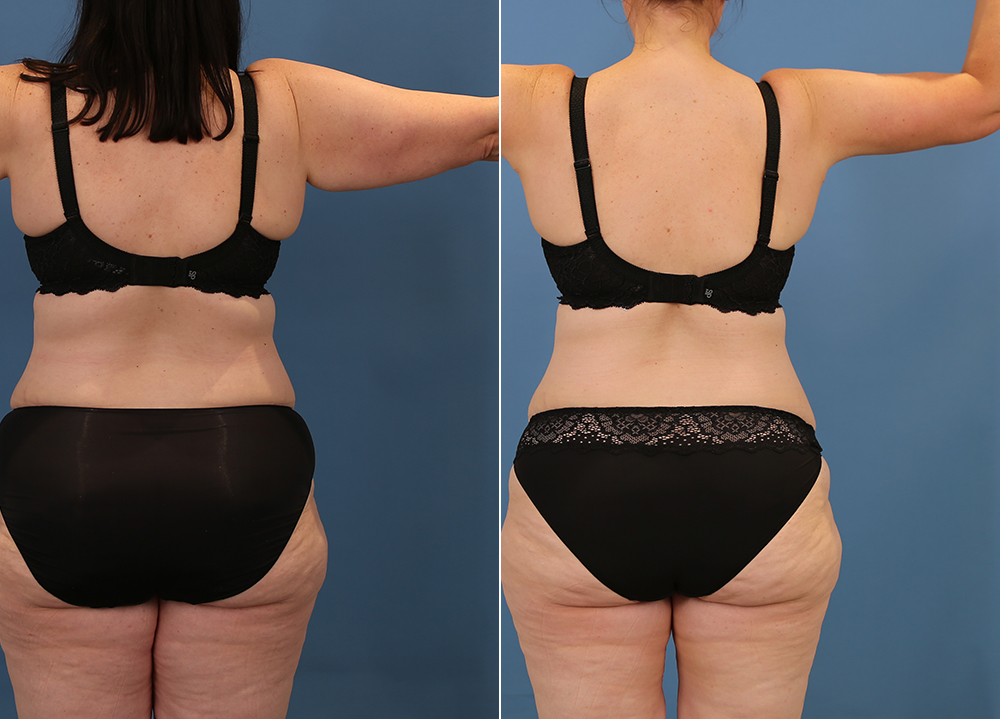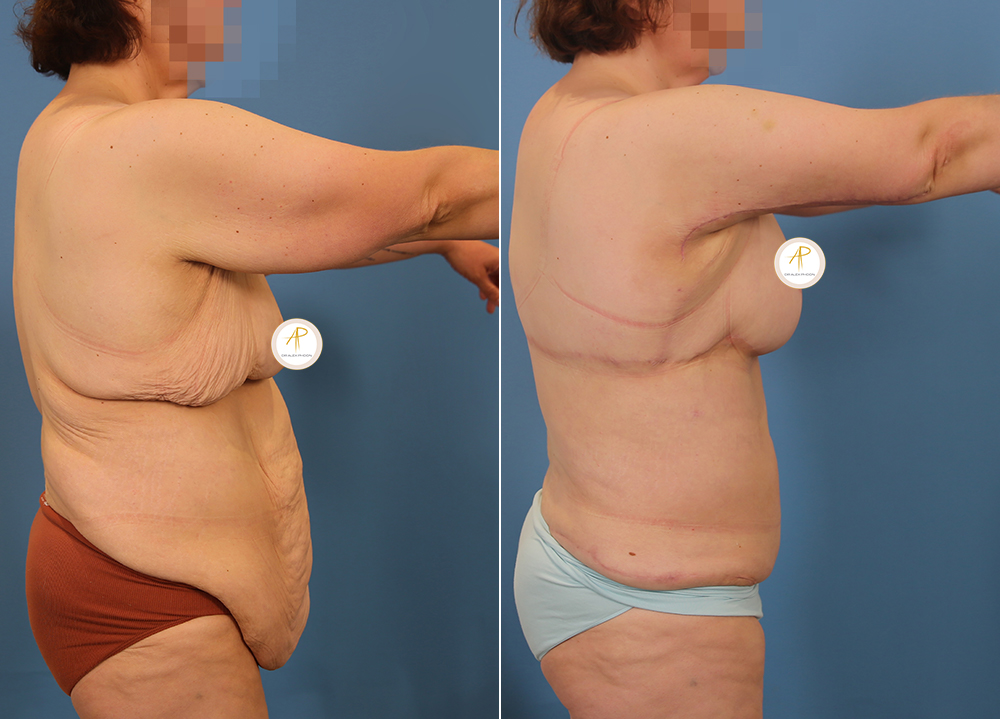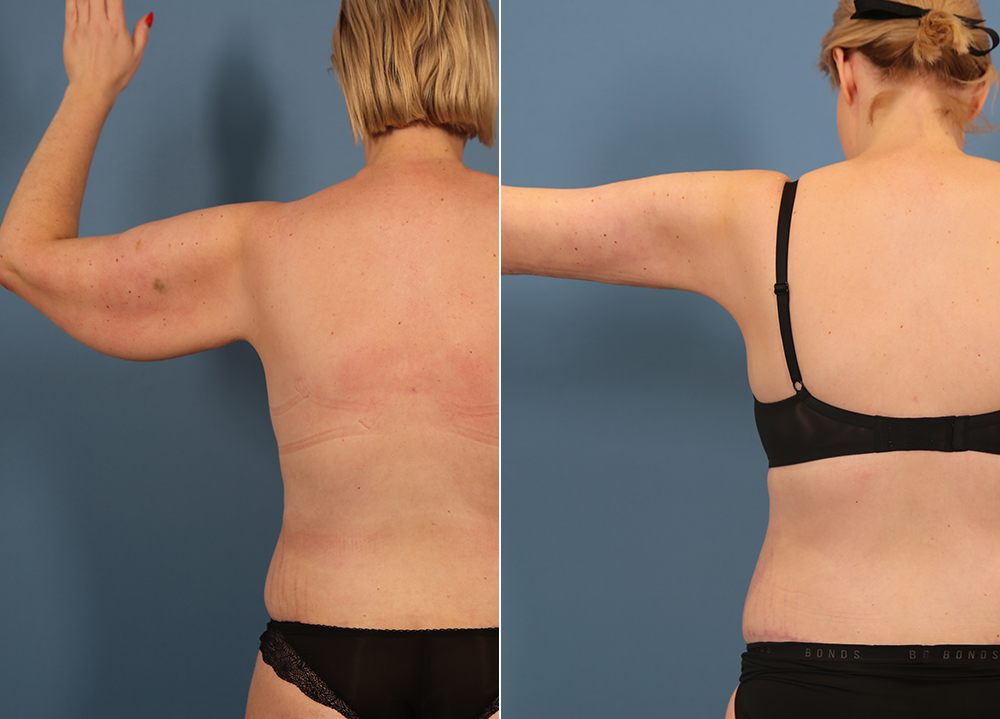LOST A SUBSTANTIAL AMOUNT OF WEIGHT RECENTLY?
Losing a large amount of weight—through lifestyle changes such as exercise or with the help of
bariatric surgery—is a significant achievement.
For many people, excess skin can remain afterwards. This may feel uncomfortable under clothing and can sometimes lead to
skin irritation or hygiene difficulties.
Our practice offers a range of surgical options that may be considered to improve body contour after weight loss.
These procedures are often complex and may be performed in stages, with the approach tailored to individual circumstances.
A consultation is important to discuss suitability, potential risks and benefits, alternatives, and expected recovery.
Note: The information above is general in nature and does not replace personalised medical advice.
Outcomes vary between individuals. Any surgical or invasive procedure carries risks.
You may wish to seek a second opinion from an appropriately qualified health practitioner.
Common Post Weight Loss SURGERIES
Belt Lipectomy
A belt lipectomy is a comprehensive procedure designed to remove excess skin and fat from the lower body, with the incision going circumferentially around the body.
Read moreThis surgery addresses the abdomen, waist, hips, pubic region and buttocks all in one operation. In addition to removing excess skin, the surgeon will also perform liposuction to enhance the body’s contour further. The result is a more defined waistline and a smoother, tighter lower body appearance. The loose skin is removed from both the front, side and back and is very common for those that have lost more than 25kg of weight loss.
FLEUR DE LIS ABDOMINOPLASTY
Fleur de Lys abdominoplasty, also known as an inverted-T abdominoplasty, is a specialized procedure that targets individuals with significant excess skin and fat in the midsection.
Read moreThis surgery involves an incision from the top of the abdomen, down the middle, and extends horizontally to the hips and most frequently around the body circumferentially as with the belt lipectomy. This technique allows the surgeon to address excess skin in both the vertical and horizontal directions, resulting in a more comprehensive abdominal contouring. Fleur de Lys abdominoplasty is especially effective for those who have experienced massive weight loss and is closely related to the corset abdominoplasty.
EXTENDED TUMMY TUCK (ABDOMINOPLASTY)
An abdominoplasty is a very powerful technique for removing loose skin and stubborn fat with liposuction.
Read moreIf you have lost a significant amount of weight (such as more than 40-50kg) this operation is often not powerful enough to address all the loose skin around the back of your body. As such it is usually reserved for younger patients whose skin has bounced back well or those who have had children and who have minimal skin and mostly muscle weakness.
CORSET ABDOMINOPLASTY
A corset abdominoplasty is a procedure specifically designed to accentuate the waist. This procedure has a significant reduction centrally so has a vertical scar in addition to a horizontal scar under the chest/breast as well as in the abdomen.
Read moreThis surgery involves a combination of vertical tightening of the abdominal muscles and the removal of excess skin and tissue from the waistline. A feature of the operation is the minimal undermining of the skin edges and minimal liposuction to encourage healing post-operatively. It is rare to combine another procedure such as a breast lift at the same time doe to the higher risk of healing issues.
BUTTOCK GRAFT LIFT
A buttock graft lift is a powerful procedure that is usually performed in combination with a belt (360) lipectomy.
Read moreIn the front of the body, the overhang or ‘pannus’ is removed whilst at the back, the buttock is lifted whilst at the same time your own excess fat is used to help revolumise the buttock area. Less volume is needed with fat grafting when the skin of the buttock is lifted at the same time. The scar is hidden in a g-string afterwards.
UPPER ARM LIFT (BRACHIOPLASTY)
Brachioplasty, commonly known as an arm lift, is a surgical procedure that targets excess skin and fat in the upper arms.
Read moreThis surgery aims to reshape the arms by removing loose skin and fat deposits, resulting in a more toned and defined appearance. Brachioplasty always involves liposuction at the same time. If the arm has lipoedema, it may rarely be done as a two-stage procedure such as a thigh lift. The scars run down the inside of the arm from the elbow to the armpit and are visible. When they go down the chest wall as well, they are called extended brachioplasties.
THIGH LIFT (LIPECTOMY)
A thigh lift is a procedure that removes the excess skin and stubborn fat from the inner thigh after massive weight loss. It is important to remember that it is not a magic wand for those who have not lost the weight first.
Read moreIndeed, some patients have naturally strong thighs, and a thigh lift will not change your underlying shape in this situation. Rarely the procedure may need to be performed in two stages with initial liposuction to debulk the thighs and a secondary procedure to remove the excess skin to minimise nerve and lymphatic injury. Thigh lifts have a high revision rate because of the loose skin involved. The scars run vertically down the inside of the leg and are visible. Just like the brachioplasty scar, you need to want to trade off the scar from the lift more than you want the loose skin as this trade-off is unavoidable.
BRA STRAP EXCISION
This operation is reserved for the most significant weight loss patients. Patients whose weight loss is characterised by significant loose folds of skin in the upper back after their weight loss.
Read moreIt is rarely performed in isolation and usually combined with a corset abdominoplasty. It can be thought of as the upper equivalent to a belt lipectomy.
FREQUENTLY ASKED QUESTIONS ABOUT POST WEIGHT LOSS SURGERY
If pre- and post-operative images are shown on this site, they are provided for general information only and do not predict your outcome. Images are displayed using comparable lighting, positioning, background, and clothing where possible. Any gallery contains a prominent notice stating that results vary due to factors including individual anatomy and healing. Images are not digitally altered other than standard anonymisation and sizing for web display.
Dr Alex Phoon Specialist Plastic Surgeon
AHPRA registration number: MED0001587102
Registration type: Specialist registration
Recognised specialty: Plastic & Reconstructive Surgery
Patients may verify registration via the AHPRA public register.
All surgical procedures carry risks. Specific to mastopexy, these may include but are not limited to:
Anaesthetic risks, infection, bleeding, delayed healing, seroma, and scarring (including hypertrophic or keloid scars).
Changes in sensation of the nipple or skin-temporary or permanent.
Asymmetry, contour irregularities, or wound dehiscence.
Scarring that may not fade completely; healing varies by individual.
Rare but serious risks such as blood clots (DVT/PE) or death.
A comprehensive written risk summary will be provided during consultation.
It is essential that all risks & complications of surgery are understood before proceeding. For more information on risks & complications please visit our web page on Risks & Complications of Cosmetic Surgery – Dr Alex Phoon
In some cases, abdominoplasty (tummy tuck) can be combined with other procedures, depending on a patient’s goals, overall health, and the surgeon’s assessment. Commonly combined procedures may include liposuction, breast surgery, or other body contouring procedures.
Whether procedures can safely be performed together depends on factors such as the expected duration of surgery, recovery considerations, and individual health. Your surgeon will discuss the potential risks, benefits, and suitability of combining procedures during a consultation.
Generally, multiple major body procedures are not performed together due to the extent of surgery and the recovery required. In addition, Medicare and health fund rules may limit the combination of certain procedures, such as abdominoplasty, brachioplasty (arm lift), or thigh lift, in a single operation.
While it may be technically possible to combine procedures outside of these restrictions, doing so can increase the complexity of surgery, the risks involved, and the length of hospital stay. Your surgeon will discuss the safest approach for your individual circumstances, including the potential benefits, risks, and recovery considerations, during your consultation.
Risks and complications of cosmetic surgery
Cosmetic surgery is a form of surgery and, like all surgical procedures, carries risks and potential complications. It is important that anyone considering cosmetic surgery is provided with accurate and complete information about these risks before deciding whether to proceed.
Dr Alex Phoon is an Australian specialist plastic surgeon (specialist registration in Surgery – Plastic Surgery, AHPRA registration number: MED0001587102). He performs cosmetic and reconstructive procedures in accredited hospital facilities with appropriately qualified surgical, anaesthetic, and nursing teams.
This page outlines general categories of risks and complications that may be associated with cosmetic surgery. A full discussion of risks specific to an individual procedure will be provided in writing and during consultation as part of the informed consent process.
Scarring
Scarring is a common concern for people considering cosmetic surgery. All surgery results in some form of scarring, and while techniques are used to help reduce its appearance, it cannot be completely avoided. The extent and visibility of scars vary between individuals and depend on factors such as the type of surgery, healing response, and skin characteristics.
Read moreThe severity and appearance of scars can vary from person to person and depend on the type of procedure performed. Factors such as genetics, skin type, and individual healing responses can influence how noticeable scars may be. In many cases, scars may become less prominent over time, but this process is highly individual.
Scarring is a normal part of the body’s healing process. When the skin is cut or injured, the body forms new collagen fibres to repair the area. This healing response creates a scar, which may differ in colour and texture from the surrounding skin.
Different types of scars may occur after cosmetic surgery. For example, hypertrophic scars are raised, thickened areas that may be red or itchy. Keloid scars, which grow beyond the boundaries of the original wound, can occur in some people and may be more common in those with darker skin tones.
While surgical techniques aim to minimise tension on the skin and place incisions in less visible areas, scarring cannot be completely avoided. Patients are often advised to follow post-operative instructions carefully, which may include wound care, the use of silicone gels or dressings, and sun protection.
In some situations, scar management or revision procedures may be discussed. These may include treatments such as laser therapy, dermabrasion, or surgical excision. The choice of treatment depends on the type of scar and individual circumstances, and outcomes can vary.
It is important to have realistic expectations about scarring before undergoing surgery. Scars cannot be eliminated, but there are options to help improve their appearance. Patients are encouraged to raise any questions or concerns with their surgeon, so they can make an informed decision about the procedure and understand the potential risks and management strategies.
Infection
Infection is a potential risk of any surgical procedure, including cosmetic surgery. Although strict sterilisation and infection-control protocols are followed, it is not possible to remove this risk entirely. The likelihood and severity of infection can vary depending on individual factors and the type of procedure performed.
Read moreTo help reduce the risk of infection, surgeons may use antibiotics, follow strict aseptic techniques, and monitor patients for any signs of infection. Patients also play an important role in their recovery by carefully following post-operative care instructions, which can assist in lowering the risk of complications.
Infection is a recognised risk of all surgical procedures, including cosmetic surgery. Any time the skin is cut, there is an entry point for bacteria and other microorganisms. Although healthcare professionals follow strict sterilisation protocols to reduce this risk, it cannot be completely eliminated.
To help lower the likelihood of infection, surgeons may use antibiotics, follow strict aseptic techniques during surgery, and monitor patients carefully afterwards. Antibiotics may be prescribed before and/or after the operation, depending on the procedure and the patient’s individual medical circumstances.
During surgery, precautions such as using sterile instruments, maintaining a controlled environment, and wearing protective clothing are followed to help reduce the introduction of bacteria into the surgical site. Even with these measures, infections can still occur, which is why ongoing monitoring and early management are important.
Patients also play an important role in their recovery. Following post-operative instructions-such as keeping the surgical site clean and dry, avoiding activities that could interfere with healing, and promptly reporting any signs of infection (for example redness, swelling, pain, or discharge)-can assist in reducing the chance of complications.
While the risk of infection cannot be removed entirely, these combined strategies-both by the surgical team and the patient-are designed to support safer recovery and allow for timely management if infection develops.
Pain
Pain and discomfort are common after cosmetic surgery. These symptoms can vary between individuals and procedures, but strategies such as prescribed pain relief and supportive care are often used to help manage them.
Read moreThe level of pain experienced after cosmetic surgery can vary depending on the type of procedure, an individual’s pain threshold, and their healing response. Pain relief medications are often prescribed to help manage discomfort during recovery. Patients are encouraged to communicate openly with their healthcare team about their pain, as effective management is an important part of the recovery process.
Undesirable cosmetic outcome
Although cosmetic surgery is performed with the intention of improving appearance, there is a risk that the final result may not meet a patient’s expectations or may differ from the anticipated outcome.
Read moreOutcomes can be influenced by many factors, including individual healing responses and the expectations a patient brings to surgery. It is important for patients to have open and thorough discussions with their surgeon about what results are realistically achievable and any potential limitations. In some cases, further procedures may be considered if the initial outcome does not meet expectations.
Nerve damage
Nerve injury is a possible complication of cosmetic surgery.
Read moreSurgeons take care to minimise the risk of nerve injury during procedures, but this risk cannot be removed entirely. Nerve damage may result in altered sensation such as numbness, tingling, or reduced sensitivity in the area of surgery. In some cases, these changes improve over time, although recovery can vary and some effects may be long-lasting. Patients are encouraged to discuss this risk with their surgeon before making a decision about surgery.
Bruising and swelling
Bruising and swelling are expected effects after cosmetic surgery, especially during the initial stages of recovery.
Read moreBruising and swelling are part of the body’s normal healing response after surgery. Measures such as compression garments, elevation, and cold compresses may be recommended to help manage these effects. Although usually temporary, bruising and swelling can cause discomfort and may influence the recovery process. Following post-operative care instructions can assist in supporting recovery, but the duration and severity of these symptoms vary between individuals.
Bleeding
Bleeding during or after surgery is a possible complication of any surgical procedure, including cosmetic surgery.
Read moreSurgeons use techniques during surgery to help control bleeding, but some post-operative bleeding can still occur. Patients should contact their healthcare provider if bleeding seems excessive or does not improve with gentle pressure. In rare cases, more significant bleeding may require further treatment in hospital, which can include additional procedures or, occasionally, a blood transfusion.
Seroma
A seroma is a collection of fluid that may develop under the skin following surgery.
Read moreSeromas form as part of the body’s inflammatory response and are more common after larger surgical procedures. They may cause swelling or discomfort. To manage this, surgeons may use drains during surgery or remove fluid afterwards through a procedure called aspiration. While these measures can help reduce the likelihood of fluid build-up, seromas can still occur. Regular follow-up and monitoring allow for timely detection and management if they develop.
Anaesthetic complications
Complications related to anaesthesia are uncommon but can occur with any surgical procedure, including cosmetic surgery.
Read moreAnaesthesia is used during surgery to manage pain and keep patients comfortable. The risks associated with anaesthesia can vary depending on individual factors such as medical history, allergies, and overall health. Anaesthetists are specialist doctors who monitor patients throughout the procedure and use established techniques to help reduce these risks, although complications can still occur.
Death
Although rare, death is a possible risk with any surgical procedure, including cosmetic surgery. It is important for patients to be aware that all surgery carries inherent risks.
Read morePatient safety is a key focus in cosmetic surgery. Preoperative assessment, careful surgical planning, and adherence to established protocols are important in helping to reduce risks. Patients are encouraged to discuss their individual concerns and circumstances with their surgical team.
In conclusion, while cosmetic surgery may change a person’s appearance, it also carries risks and potential complications. Understanding these risks and discussing them openly with a surgeon supports informed decision-making and realistic expectations. Following post-operative care instructions and maintaining clear communication with the healthcare team can also play an important role in recovery.

